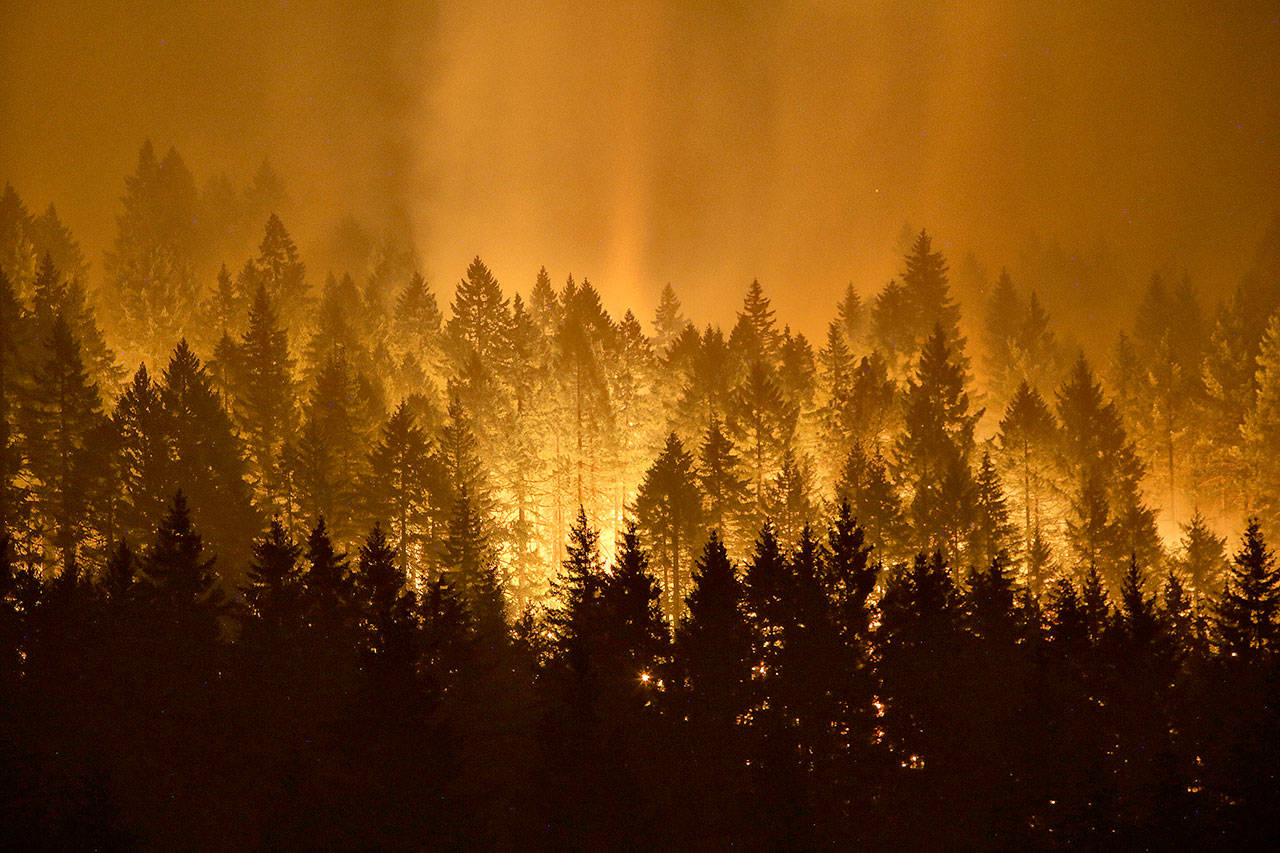By Andrew Selsky / Associated Press
SALEM, Ore. — Intense wildfires plaguing much of the West have rekindled controversy over logging restrictions and fire management practices that critics say have created explosive fire seasons.
U.S. Sen. Ron Wyden, an Oregon Democrat, took to the floor of the Senate on Thursday to describe the toll the fires have taken.
Efforts to thin dead and dying trees have been inadequate, he said as he stood next to a large photo of flames leaping from trees in the majestic Columbia River Gorge.
“This is a yearslong pattern in the West,” he said, calling for smarter policies and criticizing the “broken system of fighting wildfires.” He complained that federal funds earmarked for fire prevention are instead used for firefighting.
“The idea of ripping off prevention, which you need most, defies common sense,” Wyden said. “Shoddy budgeting today leads to bigger fires tomorrow.”
Fires have charred more than 12,000 square miles while shrouding vast areas of the West in smoke and destroying homes and historic lodges.
Some experts say the policy of fighting wildfires whenever they break out and sharply limiting logging and other forest thinning has created a combustible situation in which forests have grown too thick and too close together.
Oregon state Sen. Herman Baertschiger Jr. wrote to the chair of the Senate Environment and Natural Resources Committee, calling for a work group to revamp policy.
“The inability to manage our forest resources due to environmental concerns is threatening the safety and well-being of Oregonians and ultimately damaging our beautiful state,” the Republican wrote.
In Oregon alone, at least 822 square miles have burned so far this year — an area over half the size of Rhode Island. The 2014 wildfire season claimed 911 square miles.
“We’ve allowed forests to develop that never developed naturally,” said John Bailey, a professor of fire management at Oregon State University in Corvallis. “As a result, we have longer and hotter fire seasons that drive these megafires.”
A fire becomes a megafire when it reaches 156 square miles. A megafire burning in southwest Oregon increased to 277 square miles, authorities said Thursday.
Bailey said the solution is thinning forests through logging, prescribed burns and allowing naturally occurring fires to be managed instead of extinguished.
There is now a record amount of fire fuel such as trees and brush in the West, and forests that were once separate now overlap, he said.
“Oregon is not harvesting enough timber, nor reducing fuel loads, to ensure the health and natural resiliency of our forests,” said Republican state Sen. Sherrie Sprenger.
Paul F. Hessburg Sr., a U.S. Forest Service research landscape ecologist, told an audience in Bend, Oregon, in May that forest fuels are at “powder keg levels.”
There’s “a current epidemic of trees; more trees than the landscape can support,” he said.
He also advocated thinning by managing wildfires and other means.
“If we don’t change a few of our fire management habits, we’re going to lose a few of our beloved forests,” he said.
So far, it has cost federal, state and local governments along with private groups at least $238.5 million to fight the fires in Oregon, the Oregon Department of Forestry said.
“It is bankrupting us,” Bailey said. “The irony is we steal from the positive things we can do to keep suppressing, even though suppressing makes next year’s fire season worse.”
Talk to us
> Give us your news tips.
> Send us a letter to the editor.
> More Herald contact information.

























